The European avant-gardes are artistic and cultural movements that took place in several European countries at the beginning of the 20th century.
The avant-gardes worked in different types of art: paintings, plastic arts, literature, architecture, landscaping and music. The main manifestations were the cubism, futurism, expressionism, Dadaism and surrealism.
The movements were not formally organized, but they influenced Modern Art around the world, including in Brazil, with Modernism.
After World War I, the world underwent many transformations, especially Europe. Important political and economic changes took place: the increase in social inequality, the rural exodus and greater industrialization.
With these transformations, European artists, mainly in Paris, began to question the art of made until then, breaking with the patterns of past centuries and bringing art closer to the reality of the time course.
Characteristics of European avant-gardes
Cubism
Cubism emerged in 1907 and promoted a great aesthetic transformation in the arts. It was the artistic and cultural manifestation that proposed breaking the standards of perspective and proportion in art. Its main features were:
- Enhancement of geometric shapes.
- The dissociation of parts of the same object.
- Cutting and assembling.
- Decline in the use of the notions of perspective.
The Cubists painted an objective without respecting perspectives. In this way, an object was represented with all its dimensions stamped on the flat screen, in a particular kind of 2D representation.
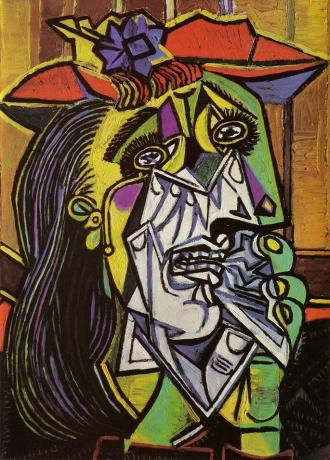
Pablo Picasso is one of the main names of Cubism in the world of painting and plastic arts.
meet the phases of cubism and its influence in Brazil.
futurism
Futurism was the movement that proposed a complete break with pre-20th century art and culture.
It began around 1909 with the publication of the Italian poet Marinetti in the French newspaper Le Figaro, entitled "Foundation and Manifesto of Futurism".
The futurist movement had a strong impact on architecture, fine arts and painting. Its main features are:
- Break with historical art.
- Valorization of the urban.
- Valorization of industrialization and mechanization.
- Valuing the speed, dynamism and urgency of modern life.
- Technology appreciation.
Especially in architecture there was an enhancement of functional works and without much ornament or decoration. In painting and sculpture, the use of strong and contrasting colors, and the sensation of speed and dynamism of the works are important marks of the movement.
Even preaching the breaking of traditions and freedom, Futurism was also approaching a glorification of the machine and technology, as well as war and violence, due to World War I.
In Italy, the Futurists had political participation, with the Futurist Party. Among his goals was patriotism through the aggrandizement of technology. Even before fascism, these characteristics of the artistic-cultural movement served as the basis for the foundation of the ideals proposed by Mussolini.
understand the characteristics of fascism.
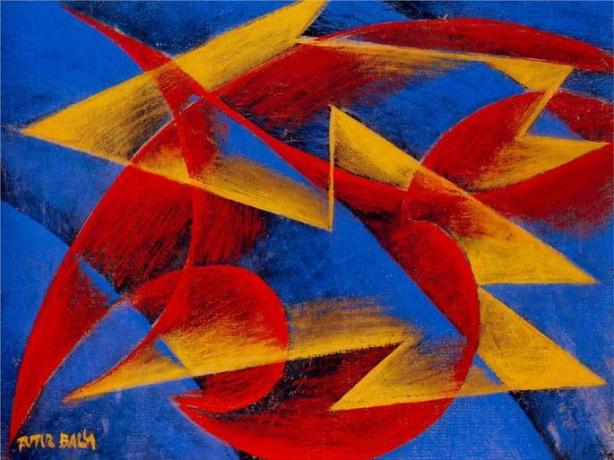
The Italian painter Giacomo Balla and the architect Antonio Sant'Elia are big names in futurism.
Expressionism
The expressionist movement emerged around 1910 and stood out mainly in Germany.
Some scholars see artistic expression as a second phase of impressionism, as artists do not wanted to break with impressionist characteristics, but to enhance human feelings and express them through of art.
The main characteristics of expressionism are:
- Expressing the depth of feelings.
- Vibrant and bright colors
- Use of thick paints and textures
- Moving away from the notions of beautiful or ugly.
- Focus on dark and sad issues/feelings.
The expressionists' interest in more tenebrous baths is the result of the experience of the First World War.
The famous painter Vincent van Gogh is one of the forerunners of expressionism. However, his work was not truly recognized until after his death in 1890.

The public at the time could not observe that the painter's paintings and drawings would be avant-garde of future modern art.
Dadaism
Dadaism dates back to 1916 and emerged among artists who went into exile in Switzerland to avoid fighting in World War I.
Through the movement, artists contested the irrationality of war, as well as the whole reality that could not avoid it. The main particularities of this artistic manifestation were:
- Denial of logic in the arts.
- Art as something that must not be rationalized, that must come from the human subconscious.
- I like the absurd.
- Any object can be considered art.
- I like satire and criticism.
- Nihilism.
One of the most famous artists of Dadaism was Marcel Duchamp, responsible for the work "The Fountain". Duchamp is considered an artist who paved the way for Pop Art and Op Art.
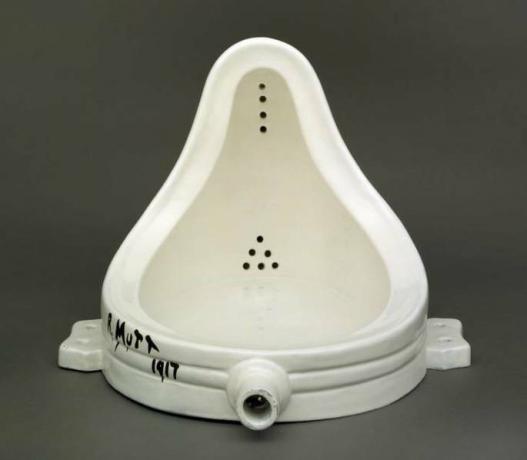
Know more about pop art and the Op Art.
Surrealism
The surrealist movement was heavily influenced by Freud's psychoanalytic studies. It emerged, approximately in 1924, through André Breton's "Manifesto of Surrealism".
The surrealists mixed reality with the fantastic. They had Dadaism as one of their bases, but unlike the previous movement, the surrealists preached the construction of a new world.
The main characteristics of Surrealism were:
- Influence of psychoanalysis.
- Appreciation of a mind free to create, without controls.
- Appreciation of the subconscious.
- Use of abstract shapes.
- Approaching the fantastic.
- Inspirations through dreams and sexuality.
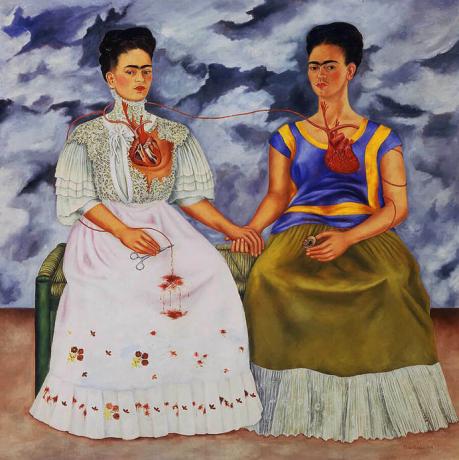
Surrealist artists known around the world are the Spanish painter Salvador Dalí and the Mexican painter Frida Kahlo.
Influence of the vanguards in Brazil
Modern Art Week
According to researcher Evandro Nascimento, the modernist movement in Brazil was quite complex and encompassed several aspects. The first steps took place between 1912 and 1917, its main milestone being the Week of Modern Art, in São Paulo, in February 1922.
Under the influence of European avant-gardes and their break with the traditional way of making art, Brazilian artists began to rethink art in the country.
The Modern Art Week symbolized a new way of making art in Brazil. The event took place at the São Paulo Municipal Theater and brought together artists from painting, sculpture, music, literature and architecture. In addition to the exhibitions, lectures and conferences were also held.
Well-known Brazilian artists participated in the Week, such as Oswaldo de Andrade, Mário de Andrade and Villa-Lobos.
From the Modern Art Week, the modernist movement gained strength in Brazil, associated with a manifestation of national appreciation. According to researcher Lúcia Helena Ramos de Souza, Brazilian modernism ended up being influenced by the boastful aspect of futurism.
Anthropophagic Manifesto
The modernist movement in Brazil had a strong patriotic aspect. The Anthropophagic Manifesto, written and published by Oswaldo de Andrade in 1928, intended to symbolically rescue some indigenous rituals.
More specifically, anthropophagic rituals, in which some Brazilian indigenous populations ate the flesh of their enemies, captured during battles. Indigenous tradition believed that by consuming human flesh, they would acquire the qualities of the captured warrior, such as strength and courage.
Oswaldo de Andrade's Manifesto preached "devouring" European culture, imposed by the colonizer, and using art from a Brazilian perspective, with freedom but without losing national identity.
One of the great artistic symbols of the Anthropophagic Manifesto is the painting Abaporu, by Tarsíla de Amaral. Abaporu means "the man who eats".
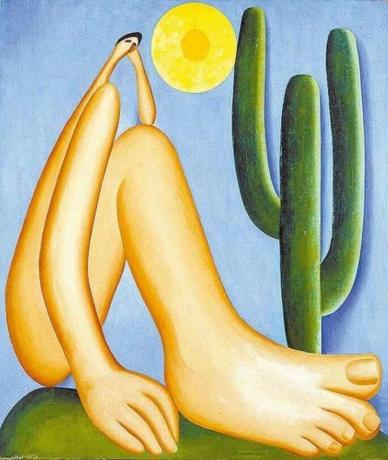
Modernism
Modernism spread to various sectors of the arts and contributed strongly to the construction of Brazilian culture. Reshaping national identity.
Still in the 20th century, the main Brazilian art museums were founded: the São Paulo Art Museum (MASP) in 1947, the Museum of Modern Art of São Paulo (MAM SP) and the Museum of Modern Art of Rio de Janeiro (MAM RJ) in 1948.
The main characteristics of Modernism in Brazil were:
- national appreciation.
- Search for a typically Brazilian art.
- Inspiration from everyday themes.
- Freedom to create from European/colonial artistic bases, but without being limited. Redefining the art made in Brazil.
- In literature: similarity of written language to spoken language.
Great Brazilian names in modernism were Villa-Lobos, Cândido Portinari, Tarsila do Amaral and Oswaldo de Andrade.
Influence of European avant-gardes in Literature
Although the European avant-gardes are best known through their paintings, they were broad artistic and cultural movements that crossed several categories of art, among them, the literature.
According to the premise of each avant-garde, it manifested itself in a way in literature.
In Cubism, the dismemberment of parts of a whole and the fragmentation of objects was adopted as a subdivision of reality. There was also a predominance in the use of nouns.
The Brazilian modernist Oswaldo de Andrade was an important name for Cubist literature in Brazil.
In futurism, the break with the past and traditionalisms was one of its great particularities. In the literature, this rupture was evident through the denial of the use of punctuation or adjectives, most verbs were used in the infinitive, looking for a completely free verse.
The themes also addressed the day to day of modern life. The work Paulicéia Desvairada by Mário de Andrade is considered futuristic.
Expressionist literature approached the dark and human pain. He criticized social repression and the bourgeoisie. In its most technical aspect, it adopted creative freedom, without worrying about form.
In Dadaism, literature took on characteristics of disorder, lack of rationality or logic and improvisation. Associating words freely.
The artist Tristan Tzara, in a Dada manifesto, demonstrated what a poem of the movement could look like and made it clear that the public would not be expected to be able to understand it.
With surrealism, literature took on a kind of automatic writing, like a stream of consciousness. The inspirations, from Freud's Psychoanalysis theories, came from dreams, the fantastic and sexuality.
The Brazilian Mario Quintana had writings considered surrealist. Some scholars have also found characteristics of the movement in the works of Lewis Carroll: Alice in Wonderland and Alice through the Looking Glass of 1865 and 1871, respectively.
Sources:
- IMBROSI, M.; MARTINS, S. In: History of the Arts. 2022. Available online.
- BORN, E. The Modern Art Week of 1922 and Brazilian Modernism: cultural updating and artistic “primitivism”. Gragoatá, Niterói, n. 39, p. 376-391, 2, 2015.
- SOUZA, L. H. R. The week of the 22nd, yesterday and today. Today's Letters, Porto Alegre, v.29, n.3, p.43-53, 1994.
- WILLETTE, J. The futurists go to war, part one. Art History Unstuffed. Los Angeles, 30 Sept. 2016. Available online.

